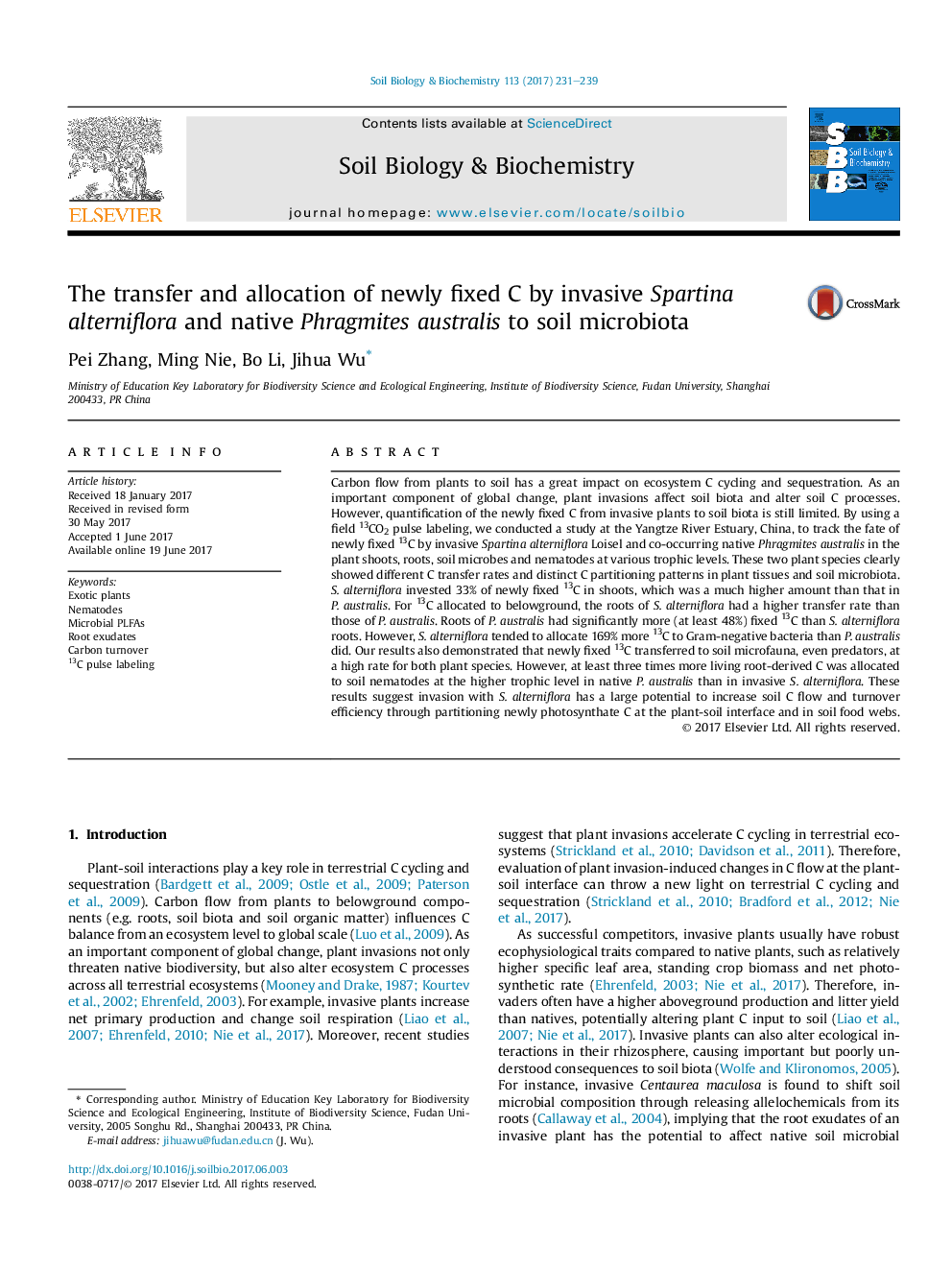| کد مقاله | کد نشریه | سال انتشار | مقاله انگلیسی | نسخه تمام متن |
|---|---|---|---|---|
| 5516385 | 1542571 | 2017 | 9 صفحه PDF | دانلود رایگان |

- Newly fixed C from invasive and native plants to soil food webs are quantified.
- Invasive and native plants showed different C allocations at plant-soil interface.
- S. alterniflora invasion had a high potential to increase C turnover efficiency.
- The living root-derived C of S. alterniflora supported a simplified soil food web.
Carbon flow from plants to soil has a great impact on ecosystem C cycling and sequestration. As an important component of global change, plant invasions affect soil biota and alter soil C processes. However, quantification of the newly fixed C from invasive plants to soil biota is still limited. By using a field 13CO2 pulse labeling, we conducted a study at the Yangtze River Estuary, China, to track the fate of newly fixed 13C by invasive Spartina alterniflora Loisel and co-occurring native Phragmites australis in the plant shoots, roots, soil microbes and nematodes at various trophic levels. These two plant species clearly showed different C transfer rates and distinct C partitioning patterns in plant tissues and soil microbiota. S. alterniflora invested 33% of newly fixed 13C in shoots, which was a much higher amount than that in P. australis. For 13C allocated to belowground, the roots of S. alterniflora had a higher transfer rate than those of P. australis. Roots of P. australis had significantly more (at least 48%) fixed 13C than S. alterniflora roots. However, S. alterniflora tended to allocate 169% more 13C to Gram-negative bacteria than P. australis did. Our results also demonstrated that newly fixed 13C transferred to soil microfauna, even predators, at a high rate for both plant species. However, at least three times more living root-derived C was allocated to soil nematodes at the higher trophic level in native P. australis than in invasive S. alterniflora. These results suggest invasion with S. alterniflora has a large potential to increase soil C flow and turnover efficiency through partitioning newly photosynthate C at the plant-soil interface and in soil food webs.
Journal: Soil Biology and Biochemistry - Volume 113, October 2017, Pages 231-239